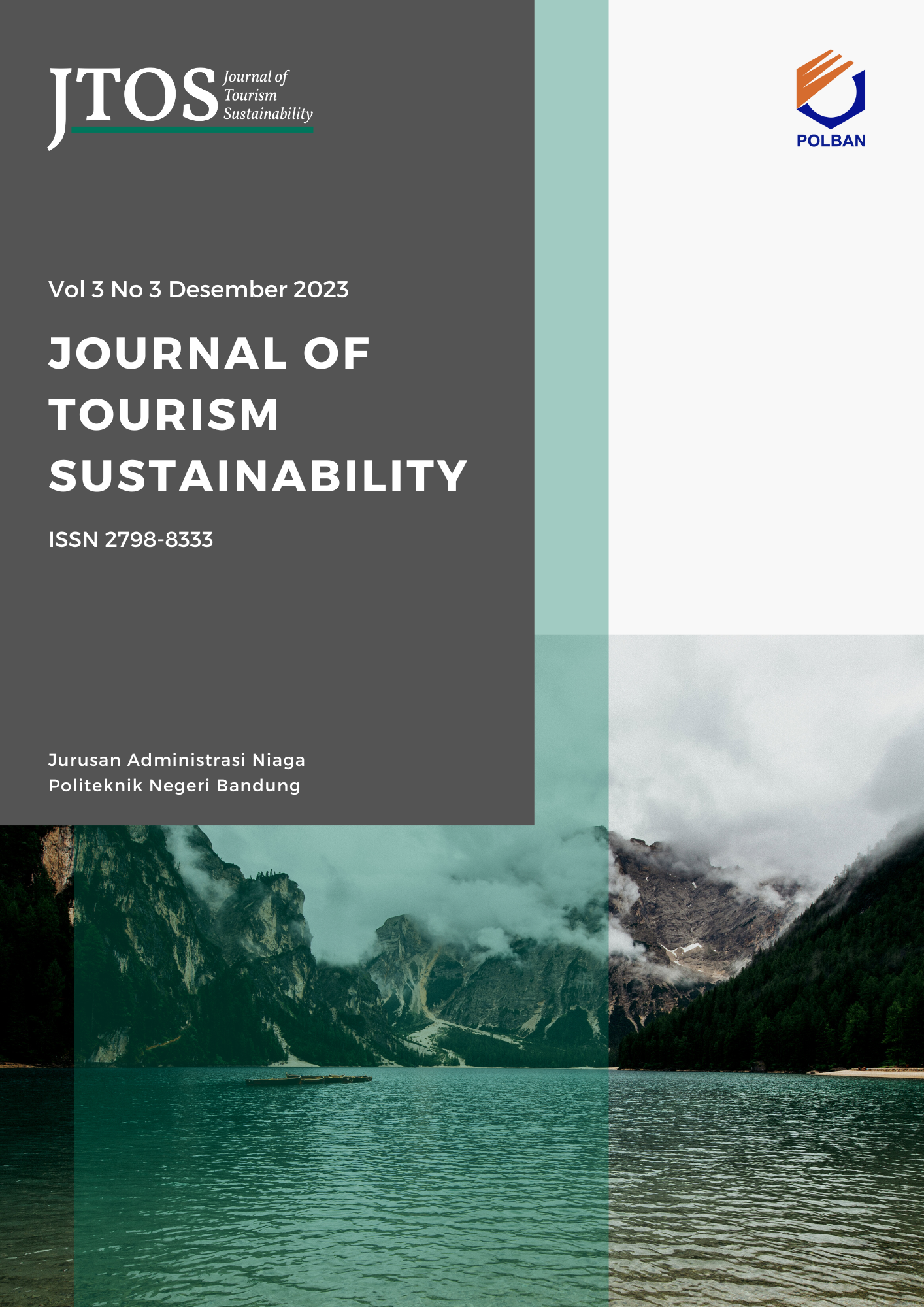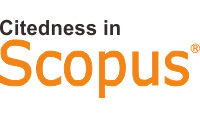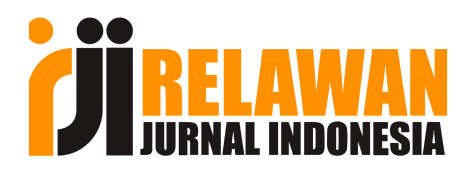From Social Media to Experience: A Digital Marketing Model for Tourism Destination in Bandung Regency
DOI:
https://doi.org/10.35313/jtospolban.v5i4.167Keywords:
social media promotion, destination image, destination attractiveness, tourist experience, revisit intentionAbstract
This study develops and tests a social-media–driven model explaining how destination social-media promotion shapes destination image and attractiveness, enriches tourist experience quality, and drives in revisit intention to tourism destination in Bandung Regency. A quantitative, cross-sectional survey of recent visitors was analyzed using PLS-SEM to estimate the measurement and structural relations. Results show that social-media promotion significantly improves destination image and attractiveness; both subsequently strengthen experience quality, which emerges as the strongest predictor of revisit intention. Reliability and validity diagnostics meet recommended thresholds, and the model explains a substantial share of variance in revisit intention. As a managerial output, the paper proposes a digital tourism marketing model that operationalizes the verified pathway by integrating S-O-R with the AIDA journey—translating attention and interest captured online into desire and action, then aligning on-site delivery with expectations formed on social media to convert engagement into repeat visitation.
References
Ajzen, I. (1991). The theory of planned behavior. Organizational Behavior and Human Decision Processes, 50(2), 179–211. https://doi.org/10.1016/0749-5978(91)90020-T
Alzaydi, Z. M., & Elsharnouby, M. H. (2023). Using social media marketing to pro-tourism behaviours: The mediating role of destination attractiveness and attitude towards the positive impacts of tourism. Future Business Journal, 9(1), 42. https://doi.org/10.1186/s43093-023-00220-5
Baber, R., & Baber, P. (2023). Influence of social media marketing efforts, e-reputation and destination image on intention to visit among tourists: Application of S-O-R model. Journal of Hospitality and Tourism Insights, 6(5), 2298–2316. https://doi.org/10.1108/JHTI-06-2022-0270
BPS Provinsi Jawa Barat. (2024). Provinsi Jawa Barat dalam Angka 2024 Volume 49, 2024. Badan Pusat Statistik Provinsi Jawa Barat.
Brown, G. (2006). Mapping landscape values and development preferences: A method for tourism and residential development planning. International Journal of Tourism Research, 8(2), 101–113. https://doi.org/10.1002/jtr.562
Chaffey, D., & Ellis-Chadwick, F. (2022). Digital marketing (Eighth edition). Pearson.
Dinas Pariwisata dan Kebudayaan Kabupaten Bandung. (2025). Data Kunjungan Destinasi Wisata Kabupaten Bandung.
Doyle, C. (2011). A Dictionary of Marketing. OUP Oxford. https://books.google.co.id/books?id=rfG1RfQKwdgC
Echtner, C. M., & Richie, J. R. B. (2003). The Meaning and Measurement of Destination Image.
Gunn, C. A. (1988). Vacationscape: Designing Tourist Regions. Van Nostrand Reinhold. https://books.google.co.id/books?id=r2WnoKxLvdwC
Hair, J. F., Hult, G. T. M., Ringle, C. M., Sarstedt, M., Danks, N. P., & Ray, S. (2021). Partial Least Squares Structural Equation Modeling (PLS-SEM) Using R: A Workbook. Springer Nature.
Hollebeek, L. D., Glynn, M. S., & Brodie, R. J. (2014). Consumer Brand Engagement in Social Media: Conceptualization, Scale Development and Validation. Journal of Interactive Marketing, 28(2), 149–165. https://doi.org/10.1016/j.intmar.2013.12.002
Hosany, S., Ekinci, Y., & Uysal, M. (2007). Destination image and destination personality. International Journal of Culture, Tourism and Hospitality Research, 1(1), 62–81. https://doi.org/10.1108/17506180710729619
Joo, Y., Seok, H., & Nam, Y. (2020). The Moderating Effect of Social Media Use on Sustainable Rural Tourism: A Theory of Planned Behavior Model. Sustainability, 12(10), 4095. https://doi.org/10.3390/su12104095
Kaplan, A. M., & Haenlein, M. (2010). Users of the world, unite! The challenges and opportunities of Social Media. Business Horizons, 53(1), 59–68. https://doi.org/10.1016/j.bushor.2009.09.003
Kemp, S. (2024, February 21). Digital 2024: Indonesia. DataReportal – Global Digital Insights. https://datareportal.com/reports/digital-2024-indonesia
Kotler, P., Kartajaya, H., & Setiawan, I. (2021). Marketing 5.0: Technology for Humanity. Wiley. https://books.google.co.id/books?id=lgAXEAAAQBAJ
Leung, D., Law, R., Van Hoof, H., & Buhalis, D. (2013). Social Media in Tourism and Hospitality: A Literature Review. Journal of Travel & Tourism Marketing, 30(1–2), 3–22. https://doi.org/10.1080/10548408.2013.750919
Loan, L. T., Quang, V., Tuan, D. M., Nghia, V. T., & Doanh, D. C. (2020). Exploring factors affecting entrepreneurial desirability among Vietnam students. International Journal of Data and Network Science, 105–114. https://doi.org/10.5267/j.ijdns.2020.3.001
Luong, N. D., Hiep, N. H., & Bui, T. H. (2021). Investigating the Spatio-Temporal Variation of Soil Moisture and Agricultural Drought towards Supporting Water Resources Management in the Red River Basin of Vietnam. Sustainability, 13(9), 4926. https://doi.org/10.3390/su13094926
Mehrabian, A., & Russell, J. A. (1974). An approach to environmental psychology. The Mit Press.
Oliver, R. L. (1999). Whence Consumer Loyalty? Journal of Marketing, 63(4_suppl1), 33–44. https://doi.org/10.1177/00222429990634s105
Petit, O., Velasco, C., & Spence, C. (2019). Digital Sensory Marketing: Integrating New Technologies into Multisensory Online Experience. Journal of Interactive Marketing, 45(1), 42–61. https://doi.org/10.1016/j.intmar.2018.07.004
Phillips, W., & Jang, S. (2007). Destination Image and Visit Intention: Examining the Moderating Role of Motivation. Tourism Analysis, 12(4), 319–326. https://doi.org/10.3727/108354207782212387
Pine, B. J., & Gilmore, J. H. (2013). The experience economy: Past, present and future. In J. Sundbo & F. Sørensen (Eds.), Handbook on the Experience Economy. Edward Elgar Publishing. https://doi.org/10.4337/9781781004227.00007
Prayag, G., & Ryan, C. (2012). Antecedents of Tourists’ Loyalty to Mauritius: The Role and Influence of Destination Image, Place Attachment, Personal Involvement, and Satisfaction. Journal of Travel Research, 51(3), 342–356. https://doi.org/10.1177/0047287511410321
Suhartanto, D. (2020). Analisis Data untuk Riset Bisnis: SPSS, AMOS, PLS (2nd ed.). Politeknik Negeri Bandung.
Suhartanto, D., Amalia, F. A., Najib, M., & Arsawan, I. W. E. (2023). METODE RISET BISNIS: DASAR-DASAR MENDESAIN DAN MELAKUKAN RISET DI KONTEKS BISNIS. Uwais Inspirasi Indonesia.
Xiang, Z., & Gretzel, U. (2010). Role of social media in online travel information search. Tourism Management, 31(2), 179–188. https://doi.org/10.1016/j.tourman.2009.02.016
Downloads
Published
Issue
Section
License
Copyright (c) 2025 Sitti Nur Azmi Fadhlurrahmah, Dwi Suhartanto, Sopia Gina Azzahra

This work is licensed under a Creative Commons Attribution-NonCommercial-ShareAlike 4.0 International License.



.png)

















